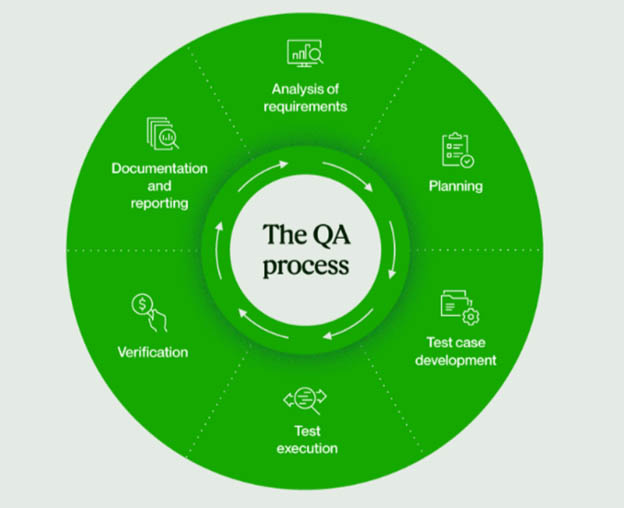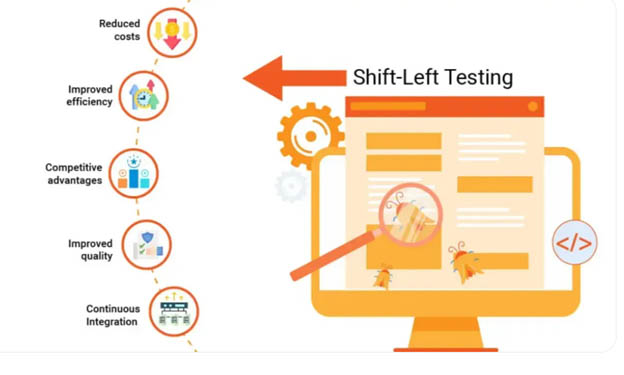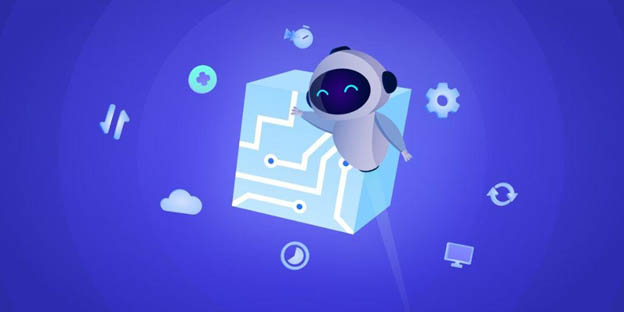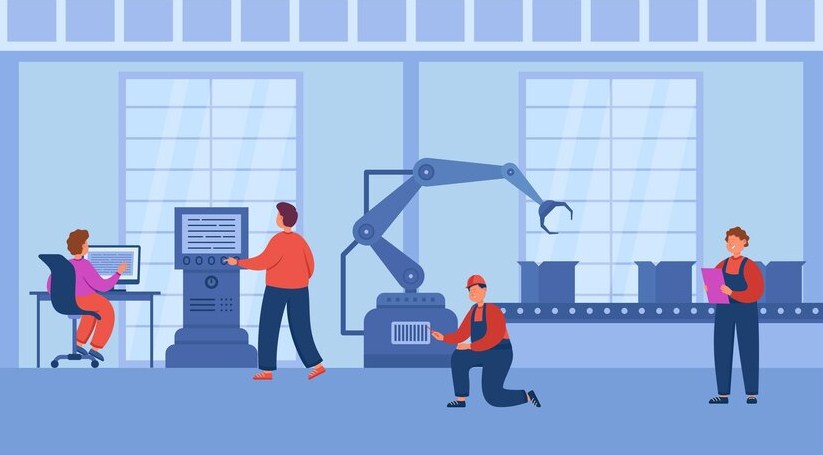The rate at which software delivery is accelerating dramatically. In parallel, software testing automation services are growing to enable continuous testing at scale.

Image source – https://www.upwork.com/
Let’s look at the top five trends that will define test automation in 2024. These emerging trends offer opportunities for QA leads to transform their teams.
However, they require proactive planning and investment in skills. Let us look at each of these trends and their implications.
Top 5 Trends in QA Automation in the Future
Trend 1: Shift Left Testing

Image Source – https://www.headspin.io/
Shift left testing involves moving quality checks earlier into the software development life cycle (SDLC).
Instead of just validating fully-coded features, defects are caught earlier during the initial stages.
This is achieved by developers writing tests, collaborating on requirements, and integrating automation suites.
Several practices enable software testing automation services to implement shift left:
Developer-driven Testing
Developers take greater ownership of quality by authoring unit tests alongside code. Unit tests validate individual modules and functions.
Developers run these tests locally before committing code. This catches bugs early before they compound. Frameworks like JUnit and NUnit make writing unit tests easier.
Acceptance Criteria Reviews
QA engineers actively participate in grooming user stories. During reviews of acceptance criteria, they provide feedback on the feasibility of automation.
Testers also estimate automation effort for each story up front. This aligns the testing scope with requirements.
Test Driven Development (TDD)
The incremental cycle rapidly builds robust, well-tested modules. Developers using TDD tend to have higher unit test coverage and fewer defects over time.
CI/CD Integration
Migrating testing into CI/CD pipelines enables running automation early and often. Unit testing kicks off on code commits.
Integration, API, and UI testing execute on staging builds. Fast feedback accelerates code quality improvements.
Alignment with Agile
Iterative agile methodologies integrate testing within sprints, not just at release. Automation suites execute in parallel by dev. and QA.
Defects caught within the sprint get fixed before release. This approach raises quality.
Collaboration and Communication
Increased collaboration between dev. and QA roles are crucial for the shift left. Developers gain a deeper understanding of test needs during design discussions.
Testers influence code maintainability requirements. Bridging skill gaps and tooling challenges is key.
Shift-left testing fundamentally improves code quality and reduces escape defects.
However, it requires changes to mindsets, practices, and skill sets within software testing automation services. The cultural challenges should not be underestimated.
Trend 2: AI-Driven Test Automation

Image Source – https://www.virtuoso.qa/
Artificial intelligence and machine learning approaches are improving testing efficiency.
AI test automation entails applying algorithms to achieve efficiency advantages in the following dimensions:
Automated Test Case Generation
The manual test case design is time-consuming and has uneven coverage. AI algorithms can automatically construct test cases based on natural language requirements.
These test cases serve as a foundation for QA teams to improve further.
Self-Healing Test Suites
Test suites gradually amass redundant and obsolete test cases, which should be deleted.
AI approaches can assist assess test coverage and identify duplicate scripts.
AI-Powered Test Optimization
It is challenging to determine suitable test scenarios since needs change so fast.
Machine learning algorithms may dynamically assess code changes and user activity to propose more high-value test cases. This prevents simple or missed tests.
Automatic Test Data Generation
Manually creating and organizing test data is a hard task.
Smart test data creation solutions use heuristics and artificial intelligence to automatically produce test cases with valid, realistic data coverage.
Conversational Test Management
Natural language interfaces allow testers to execute test runs, generate reports, log defects, etc. through vocal commands and text chats.
This hands-free mechanism speeds up test management.
AI-Enabled Root Cause Analysis and AI-Assisted Test Coverage Analytics
ML algorithms help parse test logs and results to identify patterns leading to test failures. By flagging high probability root causes of issues, debugging becomes faster.
ML techniques evaluate code complexity, feature usage, and past defects to highlight areas of inadequate test coverage.
Optimizing coverage becomes data-driven instead of manual best guesses.
Harnessing AI requires new technical skills in data, ML, and tooling.
But if applied judiciously, AI-driven automation can significantly boost productivity for software testing automation services.
Trend 3: Automated Visual Testing
Validating application UI visually across multiple devices and browsers traditionally requires enormous manual effort.
Automated visual testing aims to solve this through intelligent image analysis.
Some ways it assists software testing automation services are:
Cross-browser Visual Testing
Common browser compatibility concerns include text cutoff, alignment discrepancies, and rendering errors.
Automated visual testing conducts UI tests across many browsers and versions, capturing screenshots for comparison. Image analysis and sharpening tools identify distinctions.
Responsive Testing on All Viewports
Apps need validation across desktop, tablet, and mobile form factors.
Automated visual testing tools resize viewports programmatically and capture screenshots for side-by-side analysis. Shifts in elements, text overlaps, or truncation are flagged.
UI Element Validation
Beyond screenshots, automated visual analysis validates the presence, properties, and positioning of individual UI components.
For example, a key icon or button expected on a certain screen is checked for. Automated scripts confirm element attributes match specifications.
Design Consistency Testing
UIs should maintain a consistent look and feel across an application.
Visual regression tools perform pixel-by-pixel comparisons to identify deviations in fonts, colors, opacity, gradients, and more across screens.
Accessibility Testing
Automated tools analyze color contrast ratios, screen reader tags, and keyboard navigation to uncover accessibility issues.
This helps ensure compliance with laws and guidelines like WCAG 2.1 for users with disabilities.
Animations and Transitions Testing
Visual effects like image carousels, hover popups, and micro-interactions need validation too.
Automated scripts crawl through UI flows and take snapshots to check for defects in animations and transitions.
In essence, automated visual testing replaces human eyes with computer vision and pattern-matching techniques.
This unlocks new dimensions of speed, consistency, and coverage for UI testing.
Trend 4: API Test Automation
Enterprises now develop a portfolio of Microservices, cloud functions, and APIs for building robust digital platforms.
Rigorously testing these interfaces and contracts becomes critical.
API testing automation is crucial for software testing automation services to validate integrations between these components, catch breaking changes in contracts, and prevent downstream defects.
Some key aspects of automated API testing are:
Spec Validation
OpenAPI (Swagger) specifications define API contract details like endpoints, operations, parameters, payloads, responses, etc.
Automated tools like Postman can validate if API implementations conform to OpenAPI contracts. This ensures consistency between documentation and actual behavior.
Scenario Testing
Beyond individual calls, workflows involve specific sequences of API requests.
Collections of API calls in Postman can be chained together into scenario tests that mimic real-world usage patterns. These test flows exercise complex permutations.
Mocking and Simulation
Certain API dependencies like credit card processing services may be unavailable during testing.
API mocking tools can simulate such services with appropriate responses. This allows testing to proceed without restrictions.
Security Testing
Tools like OWASP ZAP perform automated security tests for injection threats, authentication issues, data leaks, etc. within API endpoints. Security is baked into API testing.
Load and Performance Testing
Load testing automation executes API calls at scaled-up user volumes to establish performance baselines.
Tests identify bottlenecks in servers and 3rd-party services under load. This avoids performance pitfalls.
Contract Breakage Alerts
Changes in API contracts can break downstream consumers. Automated daily smoke runs after code changes can detect and alert API contract breaks early before they impact users.
API testing automation capabilities require comprehensive tool chains and skills to be leveraged effectively by QA teams.
But they yield dividends like improved integrity in integrations between components and reduced downtime risks.
Trend 5: Test Automation in Production

While DevOps brought testing into pre-production, truly continuous testing feeds automated test scenarios from actual customer usage data.
Testing-in-production (TiP) closes the loop by leveraging live production telemetry to generate test cases that mirror real user behavior and data.
Software testing automation services can adopt TiP using techniques like:
Mining Production Logs
Analyzing application logs can uncover usage patterns, popular workflows, edge cases, and data shapes. These insights help expand test coverage with relevant scenarios versus guesswork.
Generating Synthetic Test Data
By programmatically combining and mutating forms of real production data, smart test data generators can anonymize information. This data populates test cases that better represent customer usage.
Automated Canary Testing
Before rolling out a new feature for all users, automated canary testing runs it for a small percentage of users first. Monitoring the canary metrics provides confidence to launch broadly.
A/B Testing Analytics
Results from ongoing UI/UX A/B tests indicate what customers prefer. Automated testing incorporates these learnings to optimize conversion and engagement.
Selective Chaos Tests
Controlled faults like latency injections into non-critical services reveal failure points. The automated tests under controlled chaos build application resilience.
Operational Analytics
Operational intelligence gleaned from monitoring availability, performance, feature usage, etc. feeds into test scenarios that focus on real-life production behavior.
While TiP has huge potential, it also poses engineering and compliance challenges around security, controls, and tooling for production-grade test data.
However, the benefits warrant investment into TiP by leading software testing automation services.
Overcoming Testing in Production Challenges
While the benefits of testing in production are compelling, it also introduces complexities that must be addressed:
Protecting Data Privacy
Testing with real user data risks exposing personal information if not anonymized carefully. Data must be masked or synthesized appropriately before use in automation.
Securing Test Data and Artifacts
Safely transferring production data into test environments while maintaining compliance is an engineering challenge. Secure storage and controlled access mechanisms are required.
Preventing Performance Impact
Additional monitoring, logging, and analytics may impact the production workload if not designed correctly. Lightweight data collection and separate pipelines are needed.
Achieving Test Environment Stability
Mirroring the scale and quality of live environments is hard. Realistic test data, dependency mocks, virtualization, etc. help stimulate production reliably.
Aligning Tooling and Processes
Production environments often use different toolchains versus test systems.
Bridging this tooling gap is key to enabling continuous testing. Processes must also allow production telemetry usage.
While complex, overcoming these limitations unlocks huge benefits for teams investing in testing-in-production approaches.
Managing Stakeholder Expectations
Business stakeholders need education on the goals and methods of testing in production to get their buy-in.
They must understand how customer data will be used responsibly and the benefits expected. Managing expectations prevents future roadblocks.
Addressing Compliance Constraints
Usage of production data for testing purposes may conflict with regulatory policies.
The approach must satisfy data privacy, financial compliance, and other constraints. Legal reviews help avoid violations.
Selecting Pilot Usage Scenarios
Piloting testing in production on low-risk applications and metrics builds confidence.
Starting small with non-customer-impacting data metrics is recommended. Clear success criteria guide expansion to more critical scenarios.
Evaluating Costs versus ROI
The costs of new tools, data pipelines and platform changes required for production testing need careful evaluation against expected benefits.
Starting with high ROI areas optimizes value realization.
Considering Organizational Maturity
Sophisticated capabilities like testing in production require engineering rigor and automation maturity.
Attempting too early without solid foundations can backfire. A step-wise roadmap matching current maturity is ideal.
Maintaining Focus on Test Coverage
While production data provides insights, core test coverage should still emphasize critical business scenarios, not just frequently used features. A balanced approach prevents gaps in test coverage.
Reporting Risks Transparently
Any downsides that could materialize from production testing like performance impact need transparent reporting.
Stakeholders should get a realistic picture of potential risks that mitigation plans address.
Software testing automation services require balanced investments in tools and skills.
Teams must raise their capabilities in CI/CD integration, AI/ML, API testing services, cloud-native apps, chaos engineering, and more. Training and partnerships are key enablers.
These trends provide a wake-up call to proactively upskill and evolve testing practices. Organizations that seize the opportunity stand to gain significantly improved productivity, quality, and speed.
How is your QA team gearing up for these test automation trends? Share your plans and insights below.





